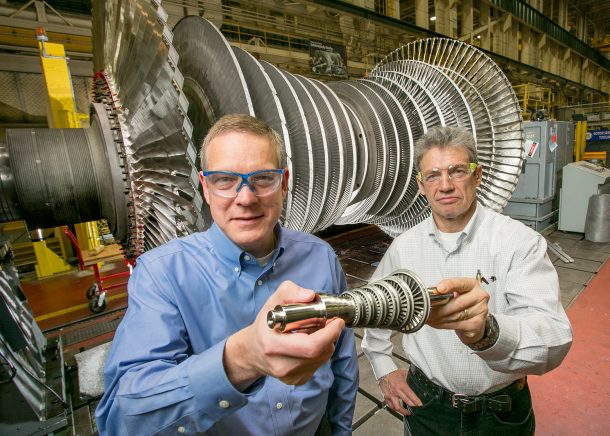One thing that plagues all turbine-based power generation systems is their size. Big turbine units mean bigger housing, maintenance and other problems in plant operations. As the world’s power generation capacity is going to lag behind the power demand, we will need more and more of these huge monsters to power our homes and industry. General Electric keeping in mind the distant future, has designed this compact desk-sized turbine that will be able to produce much more power from it per volume and so much that turbines like these could eventually be powering whole towns and replacing the bulky counterparts we see everywhere nowadays.

Doug Houfer, the engineer behind this amazing new concept, tells us a bit about how it works. While holding the real-size model in his own hands, he says that the tech is still in its early stages, and it will have a big impact on the future of power generation. But how does it begin to produce this astronomical amount of power? Well, for once, instead of steam, we will be using highly pressurized supercritical CO2 that can generate this power. Supercritical fluid has much more power generation capability than a simple liquefied or highly pressurized gas because it is a state of heat and pressure so extreme that the distinctions between gas and liquid cease to exist. This tiny design will be able to harness this anomaly in the behavior of the gas in these conditions. It will also increase the overall efficiency of the turbines from 45% to 50% which doesn’t seem a lot, to be honest, but when it is thought regarding sheer size of the power plant, it is a considerable increase.
The first 10 Megawatt prototype is in the pipeline and the researchers believe that eventually, the turbine can be scaled to produce 500 MW or the average power consumption of an entire metropolis. The first tests regarding this are scheduled for later this year. The technology seems to be great, but it might not present a unifying solution for all turbine-based power generation methods.



Good job
what will be the source or production method of pressurized supercritical CO2 ?